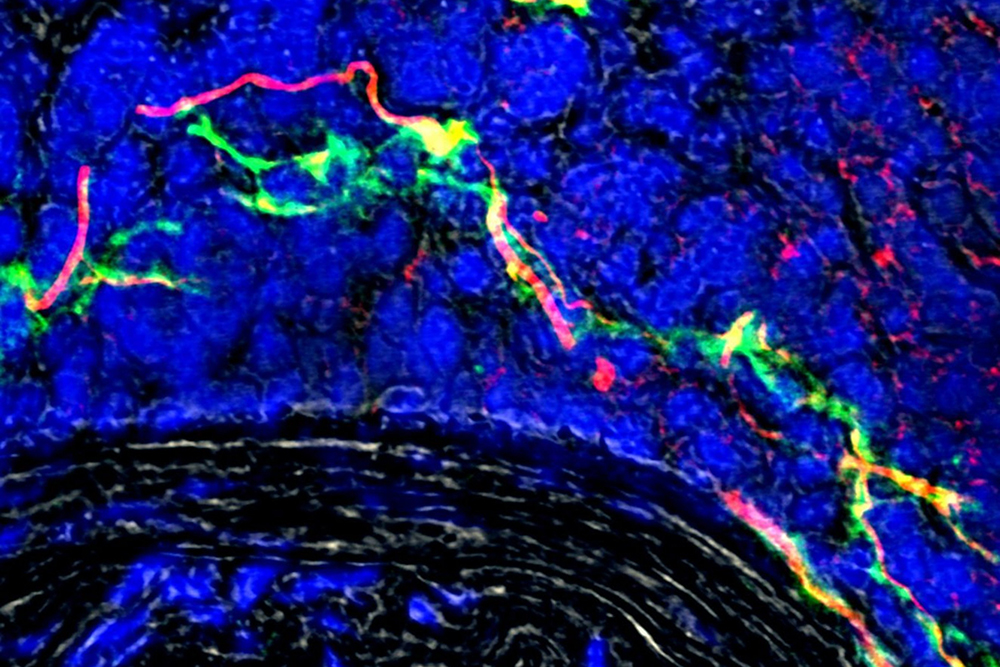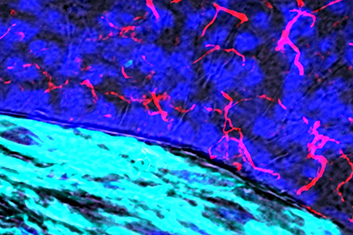Laboratories worldwide are carrying out research into the disease of atherosclerosis. However, their focus is on atherosclerotic plaques – deposits of cholesterol, fibrous tissue and immune cells that form in the inner layer of arteries. These plaques progressively constrict the lumen of the arteries, such that less oxygen can get to the body tissue. Heart attacks, strokes and peripheral occlusive disease (smoker’s leg) are among the known consequences.

“In recent decades, nobody has asked whether there is a direct connection between the artery and the brain – the obvious reason being that atherosclerotic plaques are not innervated,” says IPEK researcher Dr. Sarajo K. Mohanta . But it is precisely such a connection that he has now managed to demonstrate together with Professor Andreas Habenicht, also from IPEK, Prof. Christian Weber, director of the institute, and an international team. Crucial results were obtained by Professor Daniela Carnevale and Professor Giuseppe Lembo from the Department of Angiocardioneurology and Translational Medicine, IRCCS Neuromed, Sapienza University of Rome. Parts of the study were funded by LMU's Cluster of Excellence SyNergy and the Collaborative Research Center 1123.
Nerve network (red) in diseased artery adventitia.@LMU
In Nature, the researchers report their findings about signals that are conveyed from the arteries containing plaques via nerves to the brain. After processing of the signals in the brain has taken place, signals make their way back to the blood vessel.

